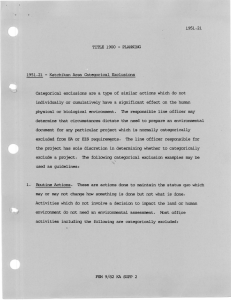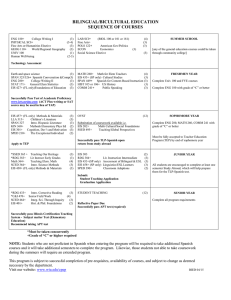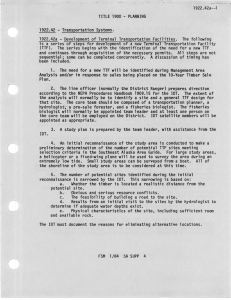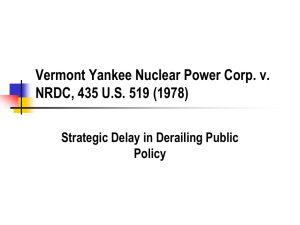1S20.731--1 1900 PLANNING 1920 - Land & Resource Management Planning
advertisement
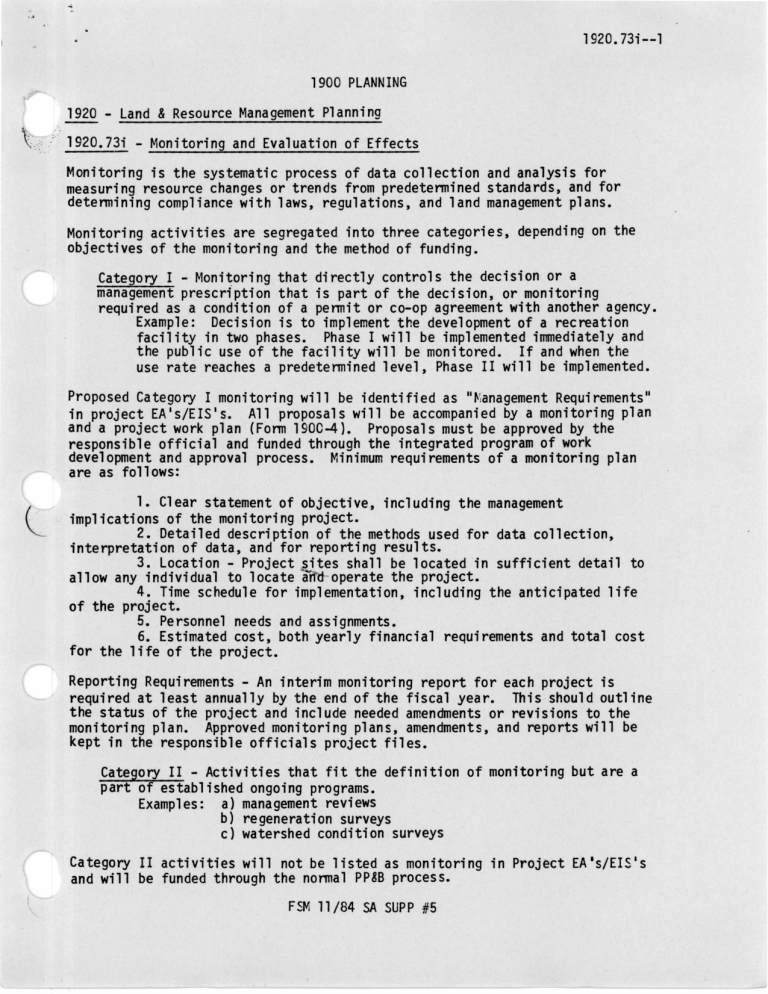
1S20.731--1 1900 PLANNING 1920 - Land & Resource Management Planning 1920.731 - Monitoring and Evaluation of Effects Monitoring is the systematic process of data collection and analysis for measuring resource changes or trends from predetermined standards, and for determining compliance with laws, regulations, and land management plans. Monitoring activities are segregated into three categories, depending on the objectives of the monitoring and the method of funding. Category I - Monitoring that directly controls the decision or a management prescription that is part of the decision, or monitoring required as a condition of a permit or co-op agreement with another agency. Example: Decision is to implement the development of a recreation facility in two phases. Phase I will be implemented immediately and the public use of the facility will be monitored. If and when the use rate reaches a predetermined level, Phase II will be implemented. Proposed Category I monitoring will be identified as "Panagement Requirements" in project EA's/EIS's. All proposals will be accompanied by a monitoring plan and a project work plan (Form 1900-4). Proposals must be approved by the responsible official and funded through the integrated program of work development and approval process. Minimum requirements of a monitoring plan are as follows: 1. Clear statement of objective, including the management implications of the monitoring project. 2. Detailed description of the methods used for data collection, interpretation of data, and for reporting results. 3. Location - Project sites shall be located in sufficient detail to allow any individual to locate and operate the project. 4. Time schedule for implementation, including the anticipated life of the project. 5. Personnel needs and assignments. 6. Estimated cost, both yearly financial requirements and total cost for the life of the project. Reporting Requirements - An interim monitoring report for each project is required at least annually by the end of the fiscal year. This should outline the status of the project and include needed amendments or revisions to the monitoring plan. Approved monitoring plans, amendments, and reports will be kept in the responsible officials project files. Category II - Activities that fit the definition of monitoring but are a part of established ongoing programs. Examples: a) management reviews b) regeneration surveys c)watershed condition surveys Category II activities will not be listed as monitoring in Project EA's/EIS's and will be funded through the normal PP8B process. FEM 11/84 SA SUPP #5 1900 PLANNING Category III - Monitoring activities other than Category I or II, designed to resolve major and/or recurring issues or management concerns. Example: Determine the rate and extent of bark accumulations from amodified bundle launching slide TTF facility. (Note: occasionally monitoring of bark accumulation is a special condition in a TTF permit. Renewal of the permit is normally cntingent upon the results of the monitoring. This required monitoring falls within Category I.) Category III activities may be listed as monitoring "opportunities" in project EA's/EIS's and will not be considered as management requirements. These activities will be considered as administrative studies and will be prepared and conducted as specified in FSM 1342. For all projects requiring Forest Supervisor approval, the SO Planning staff will coordinate and track accomplishment of all Category I monitoring and administrative studies. FSM 11/84 SA SUPP #5








